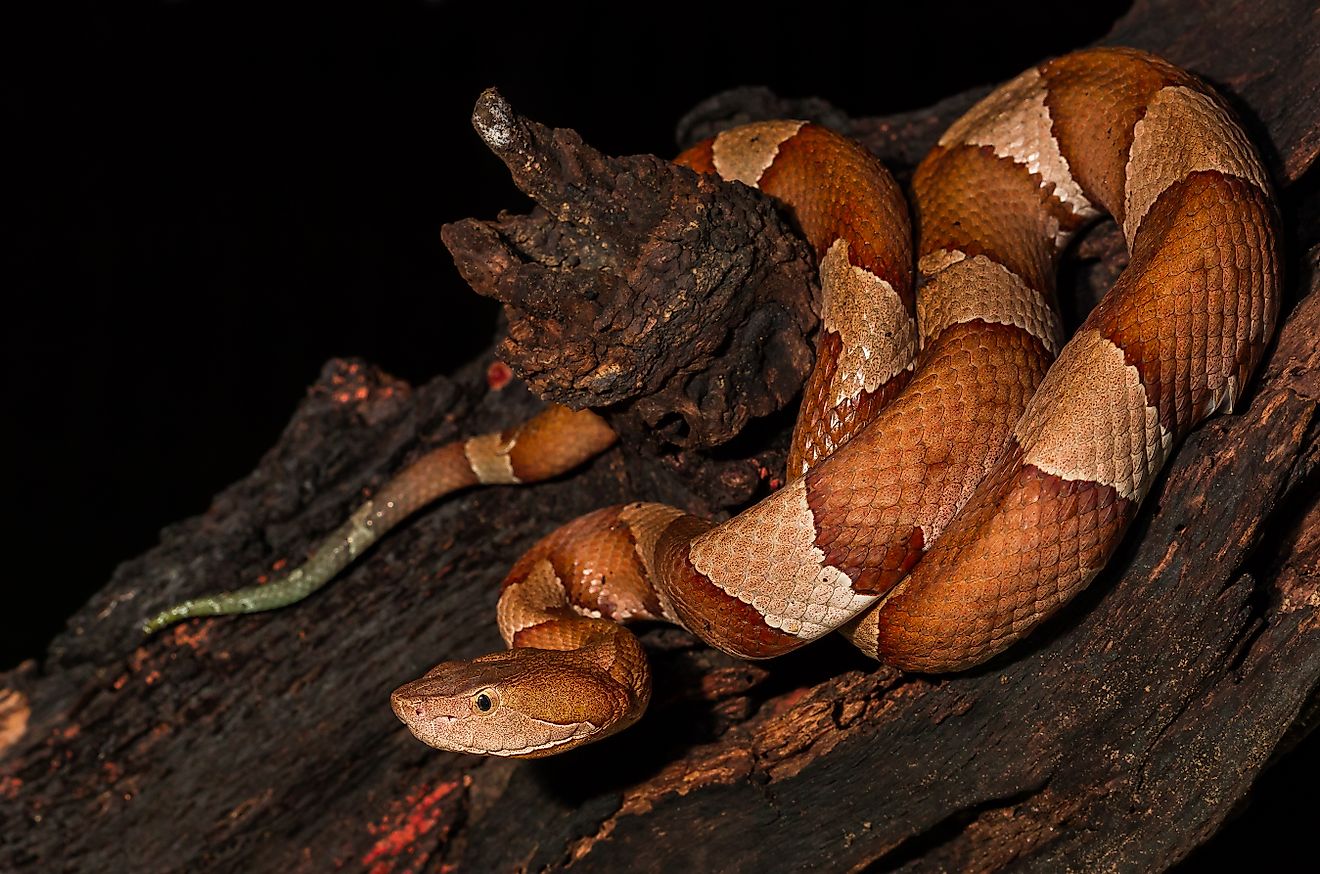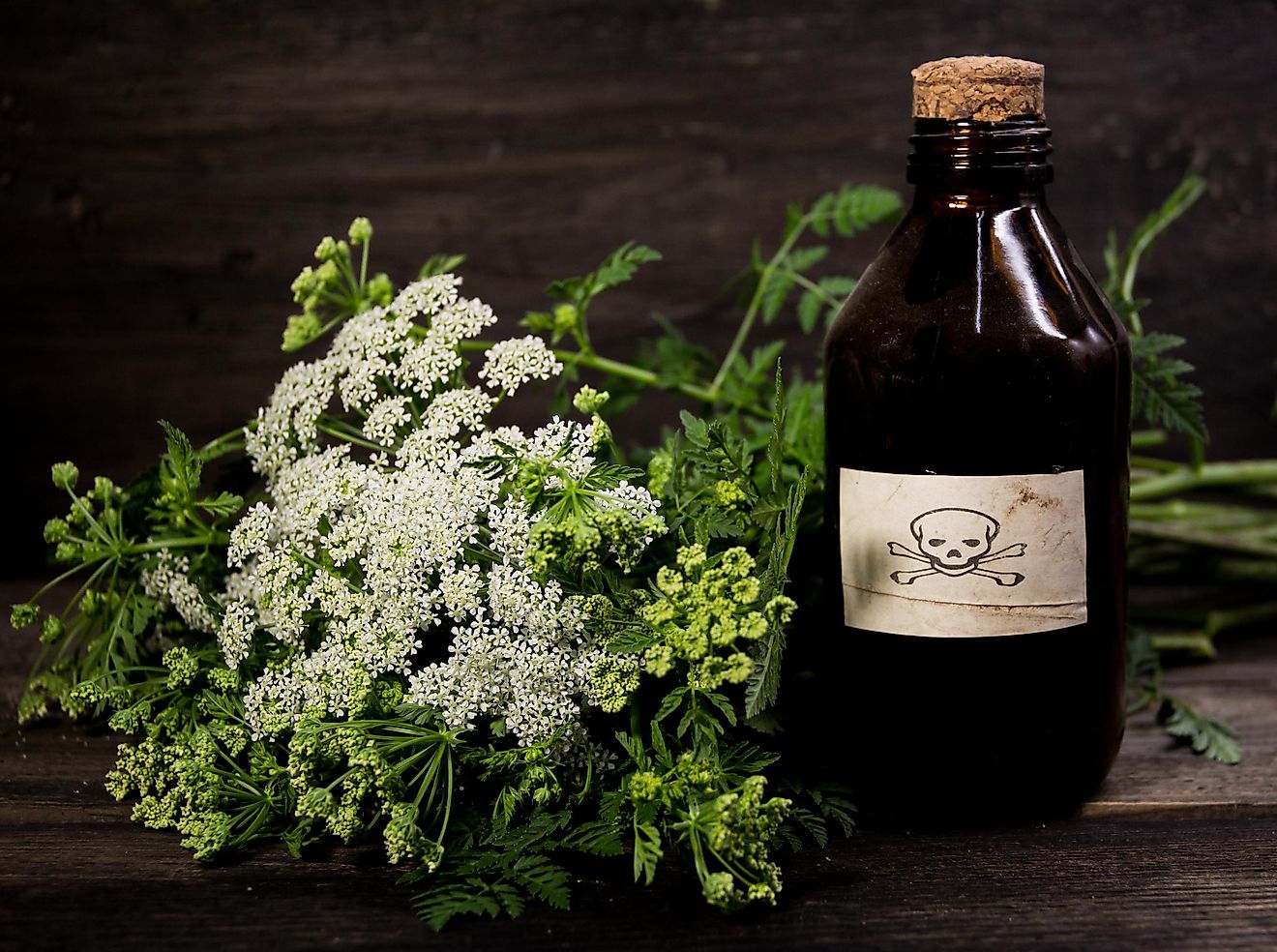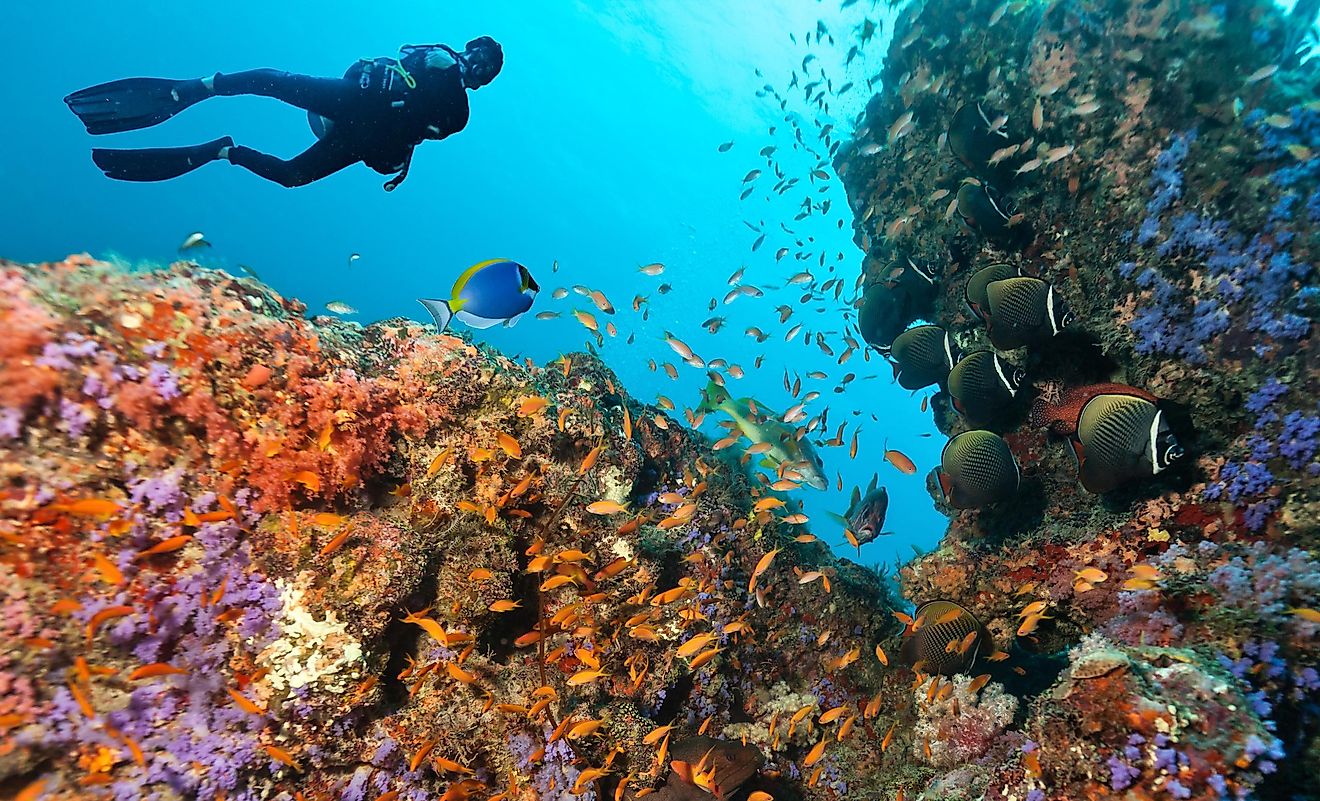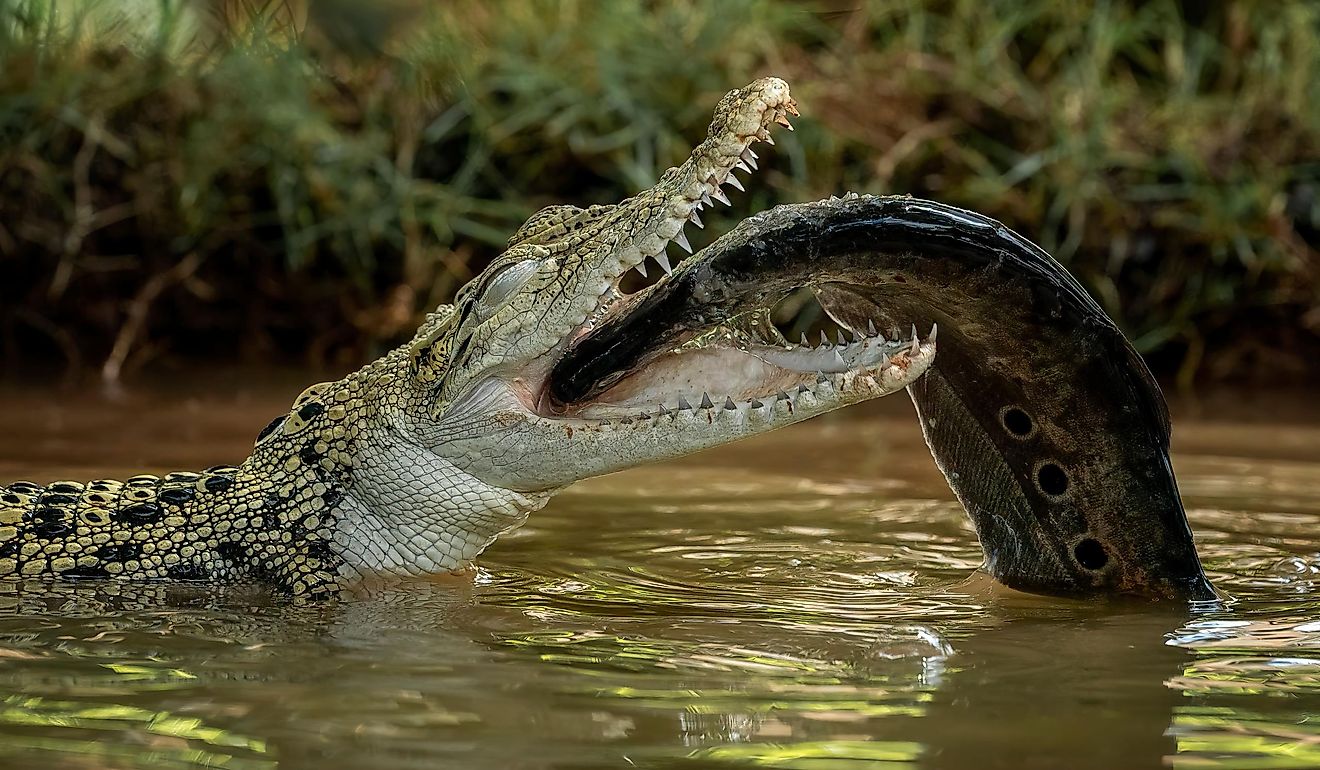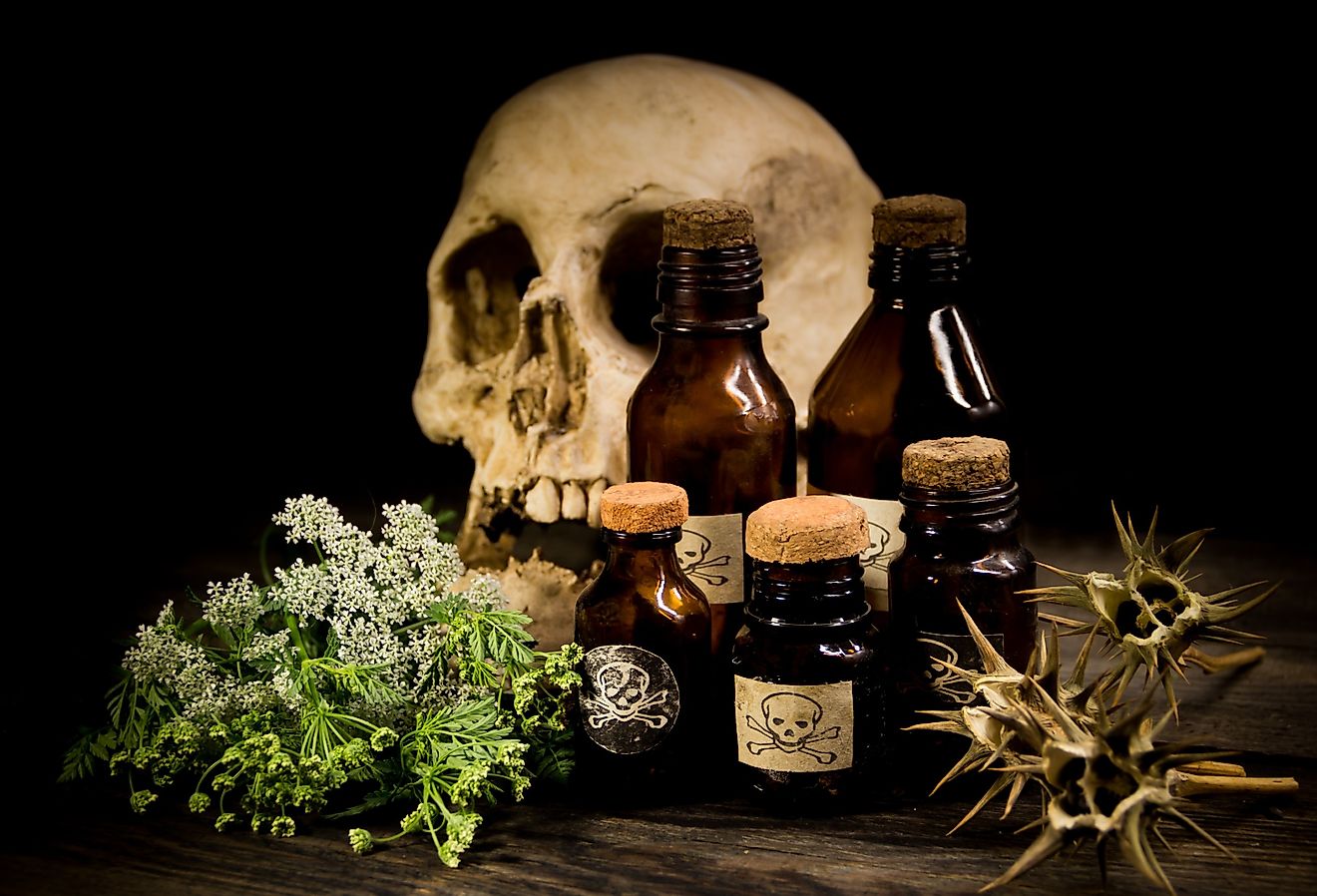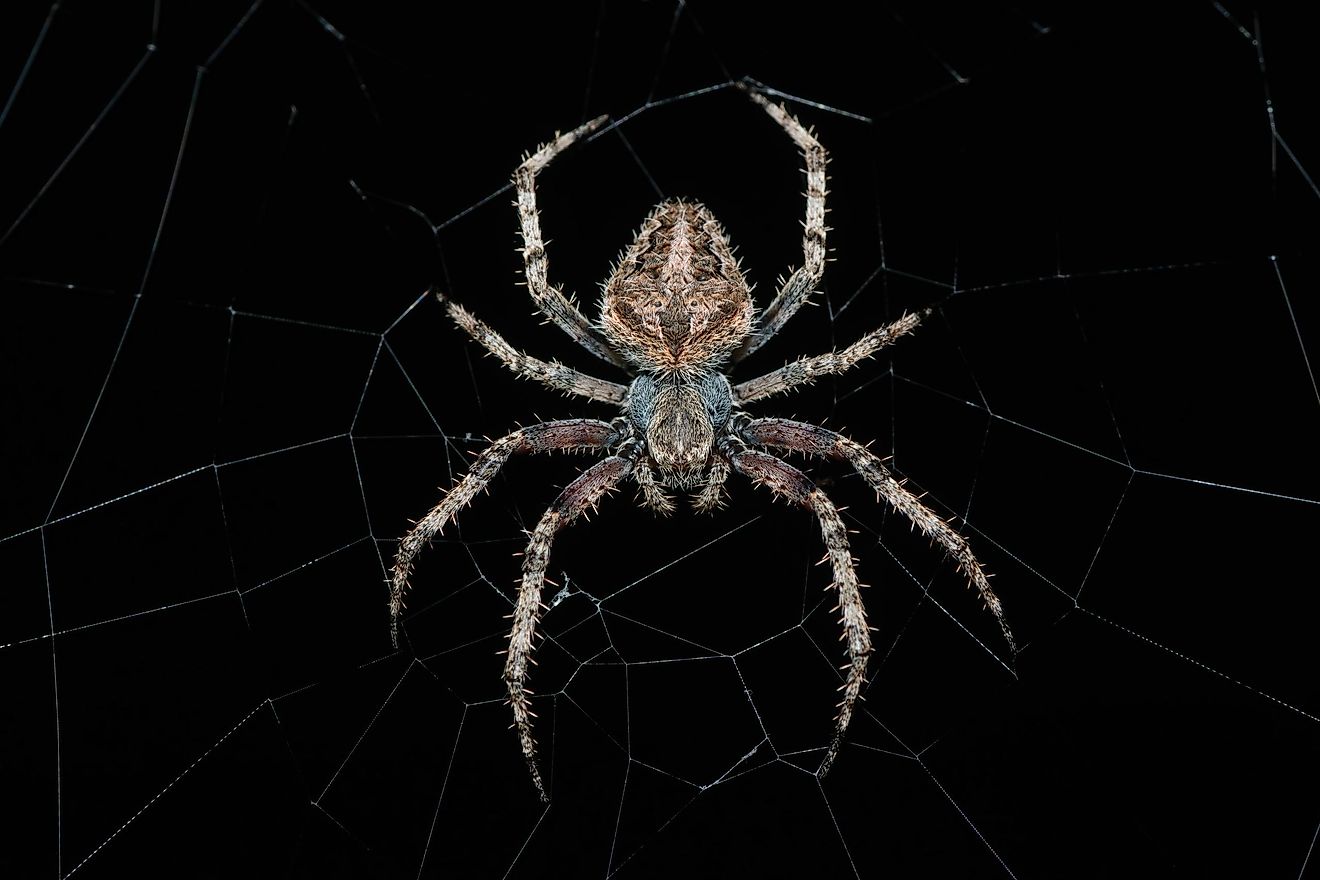
8 Most Dangerous Plants In Arizona
Arizona's climate supports a wide range of plant species, from the cacti and desert shrubs of its arid lower elevations to the coniferous forests in its mountainous regions. This state, with its subtropical and arid climate, hosts many plants adapted to extreme heat and limited water availability.
The state is home to a handful of dangerous plants that pose risks to human health. Some of these plants produce toxins that can cause severe reactions upon contact or ingestion, while others are equipped with thorns or spines capable of inflicting physical injuries. These eight should be avoided.
Oleander

Oleander (Nerium oleander) is an ornamental shrub commonly found in the warmer climates of Arizona, like Pheonix, particularly growing in the low to mid-elevation areas that offer plenty of sunlight. It is a popular choice in landscaping due to its evergreen foliage and abundance of flowers, which bloom from spring through fall in shades of pink, red, white, and yellow.
All parts of the oleander plant are toxic, containing cardiac glycosides that are poisonous to humans and animals if ingested. The plant's toxicity is potent enough that even inhaling the smoke from burning oleander wood can cause severe health issues. Symptoms of oleander poisoning include nausea, vomiting, excess salivation, abdominal pain, diarrhea, irregular heartbeats, and, in severe cases, death.
Pencil Cactus

The Pencil Cactus (Euphorbia tirucalli), often found in the warmer, arid regions of Arizona, is a succulent plant known for its pencil-thin branches. This cactus thrives in full sunlight and well-drained soil, making it well-suited to the desert climate. Its distinctive appearance, characterized by a dense cluster of green, cylindrical branches that lack visible leaves, makes it easy to spot. The Pencil Cactus can grow quite tall, reaching up to 30 feet in its native habitat.
The Pencil Cactus is dangerous due to its toxic sap. The milky latex sap contains compounds that can cause severe irritation to the skin and eyes upon contact. This sap is so potent that it can cause temporary blindness if it enters the eyes and painful irritation or allergic reactions if it comes into contact with the skin. If ingested, the sap can also cause severe irritation to the throat and stomach, leading to symptoms such as nausea and vomiting.
Jimson Weed

Jimson Weed (Datura stramonium), also known as devil's snare, is one of the widespread desert plants found in the hotter regions of Arizona, growing particularly well in disturbed soils such as those found along roadsides, in fields, and in overgrazed lands. This plant can be identified by its large, trumpet-shaped white or purple flowers and spiky seed pods. Jimson Weed blooms from early summer to late fall, emitting a strong and somewhat unpleasant odor.
All parts of the plant contain potent tropane alkaloids such as scopolamine, hyoscyamine, and atropine. These substances can induce intense hallucinations, disorientation, and amnesia when ingested, inhaled, or even touched. Symptoms of poisoning include dilated pupils, sensitivity to light, tachycardia, blurred vision, dry mouth, difficulty urinating, hallucinations, seizures, and, in some cases, coma or death. Due to these effects, Jimson Weed is considered a toxic plant and a public health hazard.
Castor Bean

The Castor Bean plant (Ricinus communis) is commonly found in Arizona. This fast-growing shrub can be identified by its large, star-shaped leaves that are often a deep glossy green or reddish-purple hue. It can grow up to 10-12 feet in height in favorable conditions, typically in gardens, along stream banks, and in waste areas where the soil is rich and periodically moist. The plant produces spiky green or red seed pods which contain castor beans.
The Castor Bean plant is dangerous due to the presence of ricin, a toxic protein found in its seeds. Ricin can be lethal if seeds are chewed and swallowed. It inhibits protein synthesis within cells, leading to cell death. Symptoms of ricin poisoning include nausea, vomiting, abdominal pain, diarrhea, and severe dehydration, potentially leading to death if not treated promptly. Additionally, the allergenic compounds in the plant sap can cause skin irritation upon contact.
Desert Rose

The Desert Rose (Adenium obesum) is a succulent plant native to arid regions but commonly found in Arizona's domestic landscapes due to its adaptability and aesthetic appeal. This plant is known for its thick, bulbous base called a caudex, which serves as a water reservoir, allowing it to grow in dry, hot environments. It typically grows to a height of one to three feet and is favored for use in rock gardens and as a container plant on patios or indoors.
Despite its look, the Desert Rose is toxic if ingested. The sap contains potent cardiac glycosides similar to those found in oleander and can cause serious symptoms if consumed by humans or animals. These symptoms include vomiting, diarrhea, an irregular heart rate, and potentially fatal cardiac complications. The sap can also cause skin irritation upon contact. Because of these risks, the Desert Rose should be handled carefully, and planters should wear gloves when pruning or potting it.
Prickly Pear Cactus

The Prickly Pear Cactus (Opuntia spp.) is a common sight in Arizona in the desert and semi-arid regions of the state. This cactus plant is easily recognizable by its flat, fleshy pads that look like large paddles, which are actually modified branches or stems. The cactus is not only a key component of the desert ecosystem, providing food and habitat for wildlife, but it is also utilized by humans. The pads (nopales) are commonly cooked and eaten as a vegetable, and the fruits are used to make jellies, candies, and drinks.
While the Prickly Pear Cactus is valuable for both wildlife and human use, it can be dangerous due to its thorns. The larger spines can cause painful injuries if they penetrate the skin, but the smaller glochids are particularly troublesome. Glochids are barbed and can easily detach from the pad and become embedded in the skin, where they are difficult to see and remove. These tiny spines can cause irritation, discomfort, and, if not removed, infection. When handling Prickly Pear Cactus, it is advisable to wear thick gloves and use tools like tongs or a fork to manage the pads.
Poison Hemlock

Poison Hemlock (Conium maculatum) is a plant found all across Arizona, particularly along streams, riverbanks, and in moist, disturbed areas such as ditches and roadsides. It is a biennial plant, typically growing to heights of five to eight feet and is characterized by its smooth, hollow green stems that are often spotted or streaked with purple. Poison Hemlock is infamous historically. It was used as a method of execution in ancient Greece, most notably in the execution of the philosopher Socrates.
The danger of Poison Hemlock lies in its high toxicity, which affects the nervous system and can be fatal to both humans and animals if ingested. All parts of the plant, including leaves, stems, seeds, and roots, contain poisonous alkaloids, with coniine being the most well-known. Coniine disrupts the workings of the central nervous system, leading to symptoms such as muscle paralysis, trembling, and, eventually, respiratory failure. Even small amounts can be dangerous, and there is no known antidote for hemlock poisoning.
Saguaro Cactus

The Saguaro Cactus (Carnegiea gigantea) is a symbol of the Sonoran Desert and is native exclusively to this region, which extends into Arizona. This cactus has a towering, tree-like form that can reach heights of up to 40 feet or more. Saguaros have a slow growth rate and may take up to 75 years to develop a side arm. Further, Saguaros are vital nesting sites for several desert birds, such as the Gila woodpecker and the elf owl.
While the Saguaro Cactus is largely benign, it can be dangerous under certain conditions. The primary risk associated with saguaros stems from their massive size and weight. Older saguaros that have become unstable due to disease or excessive water intake can topple over, posing a threat to hikers and others who might be standing nearby. The cactus' spines are sharp and can cause injury if touched or fallen into.
In Summary
Arizona is known for its variety of plant life, adapted to thrive in its climate from the desert basins to mountainous regions. This variety includes a number of plants that, while integral to the ecosystem, pose significant dangers. The eight species outlined in this article are not only capable of causing severe physical injuries with their thorns and spines but also present serious health risks through their toxic substances, which can be fatal if ingested or improperly handled. Awareness and education about these plants are crucial for safety in Arizona's outdoor spaces.


